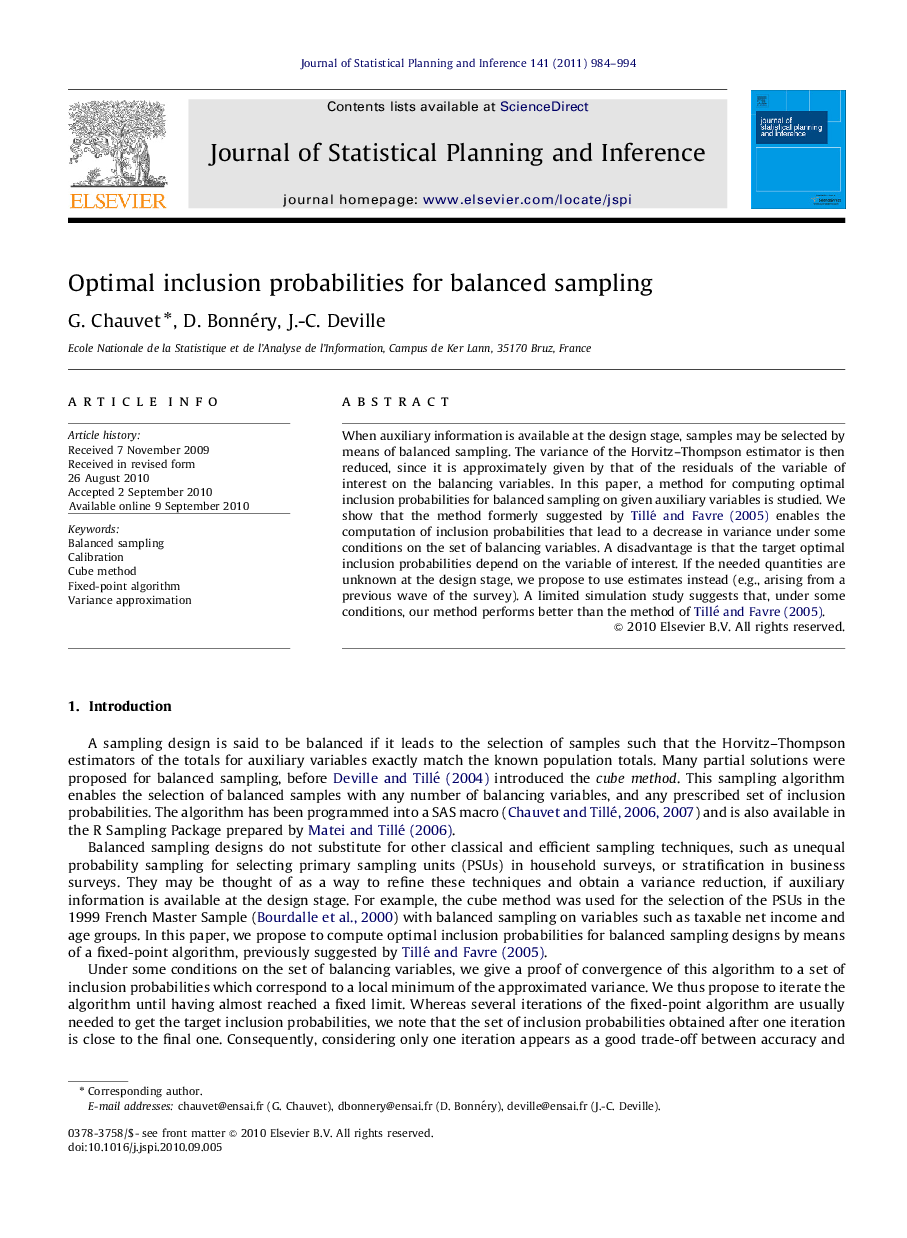| کد مقاله | کد نشریه | سال انتشار | مقاله انگلیسی | نسخه تمام متن |
|---|---|---|---|---|
| 1147765 | 957793 | 2011 | 11 صفحه PDF | دانلود رایگان |

When auxiliary information is available at the design stage, samples may be selected by means of balanced sampling. The variance of the Horvitz–Thompson estimator is then reduced, since it is approximately given by that of the residuals of the variable of interest on the balancing variables. In this paper, a method for computing optimal inclusion probabilities for balanced sampling on given auxiliary variables is studied. We show that the method formerly suggested by Tillé and Favre (2005) enables the computation of inclusion probabilities that lead to a decrease in variance under some conditions on the set of balancing variables. A disadvantage is that the target optimal inclusion probabilities depend on the variable of interest. If the needed quantities are unknown at the design stage, we propose to use estimates instead (e.g., arising from a previous wave of the survey). A limited simulation study suggests that, under some conditions, our method performs better than the method of Tillé and Favre (2005).
Journal: Journal of Statistical Planning and Inference - Volume 141, Issue 2, February 2011, Pages 984–994